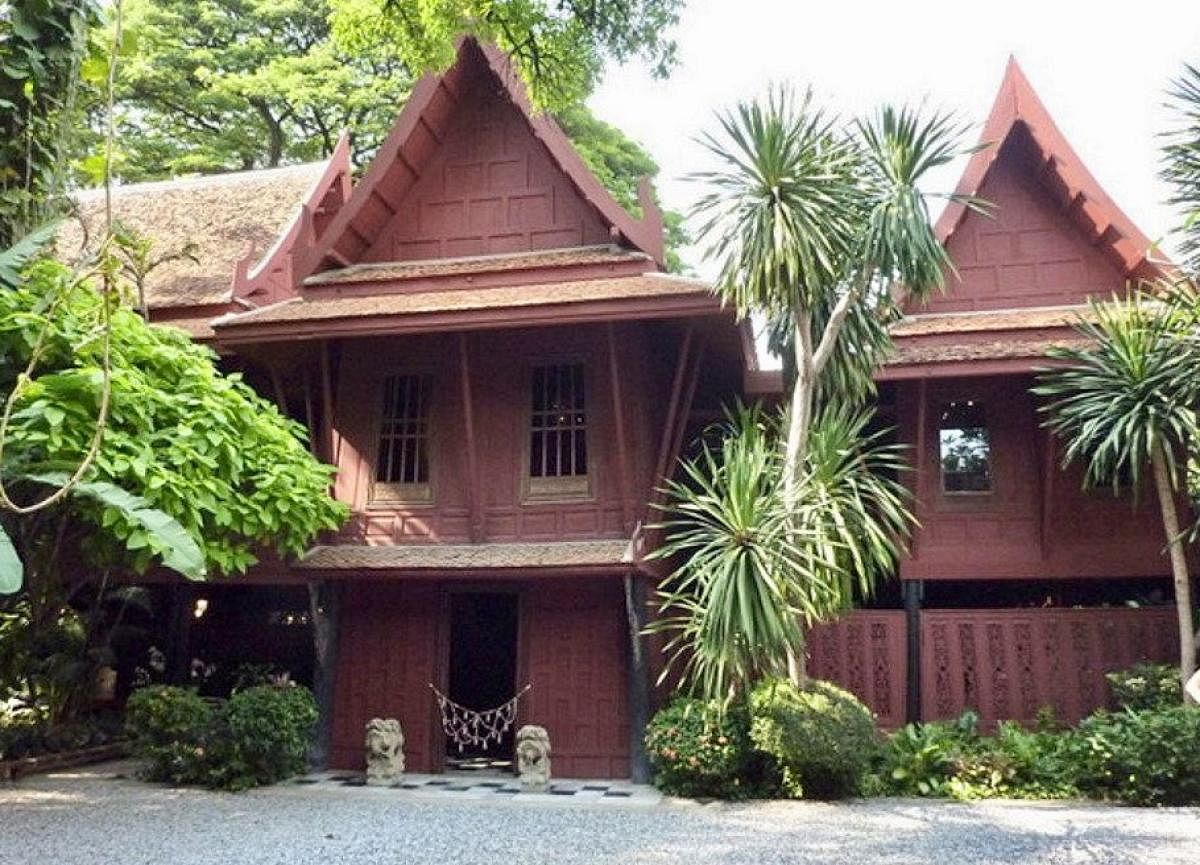
Sometimes, people vanish. Just like that. The lingering mystery of their inexplicable disappearance elevates them into creatures of fantasy …. and mythology thrives. Jim Thompson did not arrive in Thailand hoping for immortality. He was just another adventurer looking for thrills and riches in the fabled East. Today, however, he is entrenched in urban legend as a visionary who made Thailand famous for its silk.
And as the maverick who built that amazing ‘House on The Klong’, the Jim Thompson House and Museum lies a little stroll away from the Bangkok Art and Culture Center on Rama 1 Road . Close to the Saen Saep Canal, enclosed by an unexpected clump of lush tropical trees, stands ‘The House that Jim Built’.
A dream house
The architecture of the red wooden house is typical traditional Siamese. The builder’s taste for the languid sensuousness of the fairytale Orient is evident in the bungalow’s open courtyards, steep sloping roofs, colonnaded verandahs , the chaan (connecting terraces), narrow stairways, huge windows overlooking stone paved sit-outs, larger rooms giving into smaller rooms, each aspect specially thought out and overseen by him in creating his dream house. The sprawling house was built exclusively for storing his humongous collection of antique Eastern art and artefacts.
James Harrison Wilson Thompson, son of a wealthy textile manufacturer, was born in 1906 in Delaware, USA, and studied architecture in Pennsylvania University. When World War II broke out, he was drafted into the Army and served in Europe as a spy. He was then sent to the Far East to work in the OSS ( forerunner of CIA) for the liberation of Thailand from Japan. However, before he could start work, Japan surrendered, the war ended and he was back home. But Thailand beckoned. He had fallen so hopelessly in love with Siamese architecture, culture, arts and crafts that he felt compelled to emigrate and make Thailand his home.
His initial endeavour in the hospitality industry having failed, he turned his attention to a local product in which he saw immense potential: silk.
Revolutionary
Jim established the Thai Silk Company Ltd in 1948 and roped in the weavers of BangKrua to weave for him. Having dabbled in textile designing during his student days, he had talent enough to create traditional Thai silk. This was a clever invention, the silk woven with influences borrowed not only from Thai culture, but also from that of neighbouring areas like Laos, Cambodia, Burma. He also introduced colour combinations and weaves that local weavers had not used before. His silks did not sell much locally but in America, they made quite a splash.
Empowering women
To his credit, it must be said that Jim was not entirely exploitative. He had a genuine desire to help the BangKrua weavers and did not go for complete mechanisation of his factory. He maintained it as a mega cottage industry, allowing weavers, mostly women, to work from home, on their time and to earn equitably. Long before ‘female empowerment’ became a common phrase, the poor women weaving for Jim were living it. Alongside his silk revolution, Jim was also actively pursuing his hobby — nay, obsession — of collecting antiques from in and around Thailand. Silk paid for his indulgence. His prodigious collections included antique paintings (on paper, cloth and wood), sculpture, pottery, jewellery, furniture, costumes, toys, religious artefacts and ……… houses.
In what seemed like an outlandish move, he had six antique wooden houses (some, 200-years-old) from various parts of the country dismantled and reassembled at his half acre estate by the klong in Bangkok. A weaver’s home, from his beloved BangKrua, too, was one of them. These six houses became the different wings of the sprawling bungalow he designed to showcase his collections. It had taken a whole year to build it. The house created such a buzz world over, that he opened it for public viewing for a fee. The revenue earned was donated to initiatives that preserved Thai culture. In 1967, he visited the Cameron Highlands in Malaysia for a holiday with friends. On March 26, he went out alone for a post-lunch walk. And disappeared. The biggest manhunt of the time couldn’t turn up a shred of a clue about the mystery.